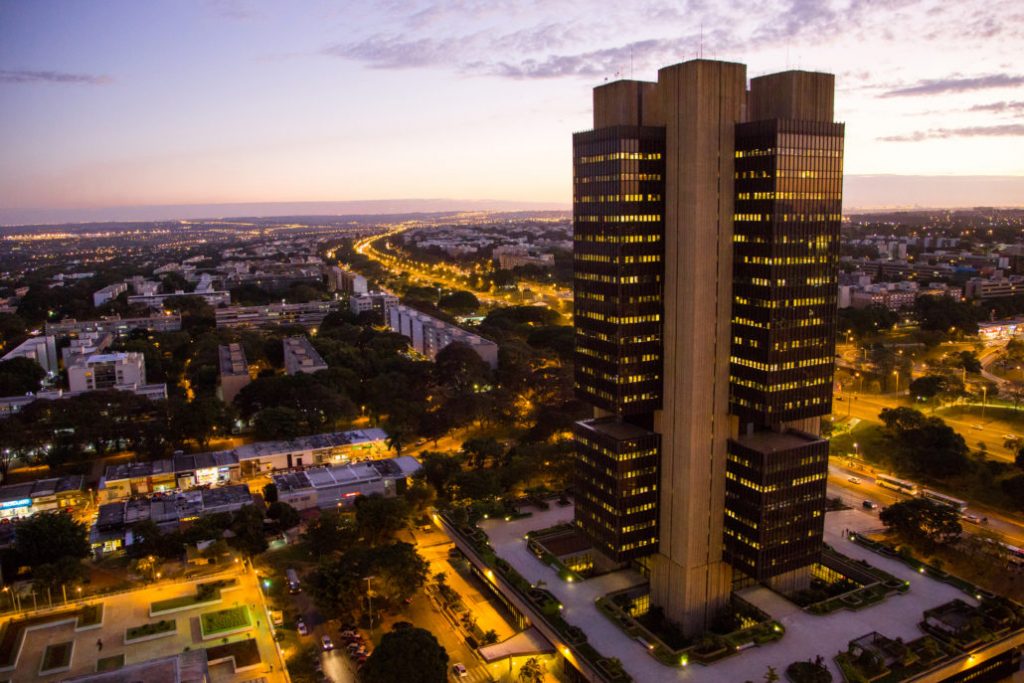RIO DE JANEIRO, BRAZIL – (Reuters) Brazil’s central bank took aim at currency speculators on Thursday, but its first market intervention in almost three months appeared to be a reluctant one and the effects may be short-lived, given a dimming economic outlook for 2020.
The central bank waded into the currency derivatives market selling US$1 (R$4.2) billion worth of FX swaps, as the real’s lurch to another record low against the dollar gathered pace and threatened to bring the currency’s year-to-date losses to a whopping 10 percent.

The sale of contracts expiring in March, October and December triggered a sharp reversal in the dollar to as low as R$4.31 from over R$4.38, although at the close of trading it had settled around R$4.34.
It was the central bank’s first new intervention in the FX swaps market in a year and a half, and will be repeated on Friday. In November, policymakers sold dollars in the spot market to address what they called a lack of liquidity.
“It is interesting that they intervened via swaps, which is normally aimed at taming speculation. The market was testing the limits and they found one,” said Drausio Giacomelli, head of emerging market research at Deutsche Bank in New York.
“But the underlying view at the central bank and Economy Ministry is that the weak real is okay,” he said, referring to comments late on Wednesday by central bank chief Roberto Campos Neto and Economy Minister Paulo Guedes.
In a TV interview with GloboNews broadcast just before midnight on Wednesday, Campos Neto said several times that the exchange rate is a floating exchange rate.
Asked to comment specifically on earlier remarks by Guedes that showed his comfort with a weaker currency, which might encourage further selling at the market open on Thursday, Campos Neto repeated that the real is a floating exchange rate.
The clear implication was that the central bank’s preference was not to intervene in the market if it could help it, traders said, despite pressure to do so as the real slumped to record lows day after day.
Unsurprisingly, the laissez-faire double whammy from Campos Neto and Guedes unleashed another wave of selling. The real crashed through 4.38 per dollar for the first time ever, taking its losses against the greenback so far this year to 9 percent.
Analysts at Citi noted that November’s intervention in the spot market steadied the currency for a month. Following Thursday’s move in the FX swaps market, the real “should at least stabilize and possibly move back below 4.30 again in due course,” they wrote in a client note.
But if the November playbook is any guide, the respite may be short-lived. The real’s rebound of almost 7% in the last five weeks of 2019 was swiftly erased by the near-10 percent slump in the first six weeks of this year.
A sustained rally may also be unlikely if upcoming data continue to show economic growth losing steam and lead to more downward revisions to 2020 forecasts.
With economic signals largely pointing in one direction, markets are showing little of the whipsaw trading that would justify heavier intervention to smooth sharp swings.
Market volatility remains relatively contained, picking up in recent weeks but still nowhere near the peaks of August last year, when the central bank intervened selling dollar reserves for the first time in over a decade.
Even after that, Brazil’s FX reserves are a sizeable US$360 billion, but there are few signs that policymakers want to tap that stockpile.
“Nobody’s worried about the exchange rate,” Treasury Secretary Mansueto Almeida told Reuters in an interview on Wednesday, stressing that FX policy lies solely with the central bank.
“(It) would be worrying if we had a very wide current account deficit and were unable to finance it, and we had very low FX reserves. None of that is the case today,” he said.
The current account deficit approaching 3 percent of gross domestic product is adequately funded by foreign direct investment worth over 4 percent of gross domestic product.
Source: Reuters

